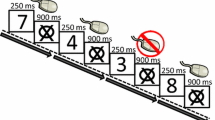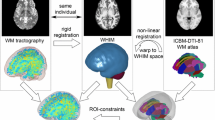Abstract
Sports related concussion (SRC) is a common health concern for young athletes. However, SRC is primarily managed from subjective assessment of symptomology and the unique response to concussive head impact, warrants more objective and personalized prognosis and management particularly related to the difficult decision of when to return to play. A data based objective approach is needed in this area, particularly to inform return-to-play decision making. We present a genetic fuzzy based methodology for predicting the time a player would need to return to play following a concussion. The predictions are based on connectivity data collected using Diffusion Tensor Imaging (DTI) data collected among a large cohort of athletes post SRC. Principal Component Analysis (PCA) is done for variable reduction. Fuzzy Bolt© is used to train the GFS for regression and classification. For the regression case, the GFS model is trained to predict the return to play time needed whereas for classification, another GFS model is trained to predict if the return to play would be short (\(\le 13\) days) or long (\( > 13\) days). The dataset used for training included 34 datapoints, and the performance of the GFS was compared against neural networks and support vector machines. The paper presents the improvement obtained using GFS over neural networks and support vector machines.
Access this chapter
Tax calculation will be finalised at checkout
Purchases are for personal use only
Similar content being viewed by others
References
Daneshvar, D.H., Nowinski, C.J., McKee, A.C., Cantu, R.C.: The epidemiology of sport-related concussion. Clin. Sports Med. 30(1), 1–17 (2011)
Halstead, M.E., Walter, K.D.: Sport-related concussion in children and adolescents. Pediatrics 126(3), 597–615 (2010)
Lincoln, A.E., et al: Trends in concussion incidence in high school sports: a prospective 11-year study. Am. J. Sports Med. 39(5), 958–963 (2011)
Broglio, S.P., et al.: National athletic trainers’ association position statement: management of sport concussion. J. Athl. Train. 49(2), 245–265 (2014)
Higgins, K.L., Denney, R.L., Maerlender, A.: Sandbagging on the immediate post-concussion assessment and cognitive testing (impact) in a high school athlete population. Arch. Clin. Neuropsychol. 32(3), 259–266 (2017)
Asken, B.M., et al.: “Playing through it”: delayed reporting and removal from athletic activity after concussion predicts prolonged recovery. J. Athl. Train. 51(4), 329–335 (2016)
Bhavya, M., Dino, M., Sathyan, A., Cohen, K.: Genetic fuzzy system for anticipating athlete decision making in virtual reality. In: North American Fuzzy Information Processing Society (2020)
Sathyan, A., Harrison, H.S., Kiefer, A.W., Silva, P.L., MacPherson, R., Cohen, K.: Genetic fuzzy system for anticipating athlete decision making in virtual reality. In: Kearfott, R., Batyrshin, I., Reformat, M., Ceberio, M., Kreinovich, V. (eds.) Fuzzy Techniques: Theory and Applications. IFSA/NAFIPS 2019 2019. Advances in Intelligent Systems and Computing, vol. 1000, pp. 578–588. Springer, Cham (2019). https://doi.org/10.1007/978-3-030-21920-8_51
Jang, J.S.: ANFIS: adaptive-network-based fuzzy inference system. IEEE Trans. Syst. Man Cybern. 23(3), 665–685 (1993)
Jain, R., Sivakumaran, N., Radhakrishnan, T.K.: Design of self tuning fuzzy controllers for nonlinear systems. Expert Syst. Appl. 38(4), 4466–4476 (2011)
Cordón, O., Gomide, F., Herrera, F., Hoffmann, F., Magdalena, L.: Ten years of genetic fuzzy systems: current framework and new trends. Fuzzy Sets Syst. 141(1), 5–31 (2004)
Sathyan, A., Ma, O.: Collaborative control of multiple robots using genetic fuzzy systems. Robotica 37(11), 1922–1936 (2019)
Sathyan, A., Cohen, K., Ma, O.: Genetic fuzzy based scalable system of distributed robots for a collaborative task. Front. Robot. AI 7, 601243 (2020)
Ernest, N., Carroll, D., Schumacher, C., Clark, M., Cohen, K., Lee, G.: Genetic fuzzy based artificial intelligence for unmanned combat aerial vehicle control in simulated air combat missions. J. Defense Manag. 6(1), 1–7 (2016)
Sathyan, A., Ernest, N., Cohen, K.: An efficient genetic fuzzy approach to UAV swarm routing. Unmanned Syst. 4(2), 117–127 (2016)
Jed, A.D., et al.: The effects of internal jugular vein compression for modulating and preserving white matter following a season of American tackle football: a prospective longitudinal evaluation of differential head impact exposure. J. Neurosci. Res. 99(2), 423–445 (2021)
Wang, R., Benner, T., Sorensen, A.G., Wedeen, V.J.: Diffusion toolkit: a software package for diffusion imaging data processing and tractography. In: Proceedings of the International Society for Magnetic Resonance in Medicine, vol. 15. Berlin (2007)
Bassett, D.S., Brown, J.A., Deshpande, V., Carlson, J.M., Grafton, S.T.: Conserved and variable architecture of human white matter connectivity. Neuroimage 54(2), 1262–1279 (2011)
Abdi, H.: Factor rotations in factor analyses. Encyclopedia for Research Methods for the Social Sciences. Sage: Thousand Oaks, CA, pp. 792–795 (2003)
Kiefer, A.W., et al.: Predicting protracted concussion recovery to inform proactive care: A Genetic Fuzzy machine learning approach: 2830 Board# 291 May 29 9:30am-11:00am. Med. Sci. Sports Exerc. 52(7S), 785 (2020)
Sathyan, A., Ma, J., Cohen, K.: Freeway cooperative merge in dense traffic using decentralized genetic fuzzy systems. Poster presented at Transportation Research Board Annual Meeting (2021)
Author information
Authors and Affiliations
Corresponding author
Editor information
Editors and Affiliations
Rights and permissions
Copyright information
© 2022 The Author(s), under exclusive license to Springer Nature Switzerland AG
About this paper
Cite this paper
Sathyan, A. et al. (2022). Genetic Fuzzy Methodology to Predict Time to Return to Play from Sports-Related Concussion. In: Rayz, J., Raskin, V., Dick, S., Kreinovich, V. (eds) Explainable AI and Other Applications of Fuzzy Techniques. NAFIPS 2021. Lecture Notes in Networks and Systems, vol 258. Springer, Cham. https://doi.org/10.1007/978-3-030-82099-2_34
Download citation
DOI: https://doi.org/10.1007/978-3-030-82099-2_34
Published:
Publisher Name: Springer, Cham
Print ISBN: 978-3-030-82098-5
Online ISBN: 978-3-030-82099-2
eBook Packages: Intelligent Technologies and RoboticsIntelligent Technologies and Robotics (R0)




